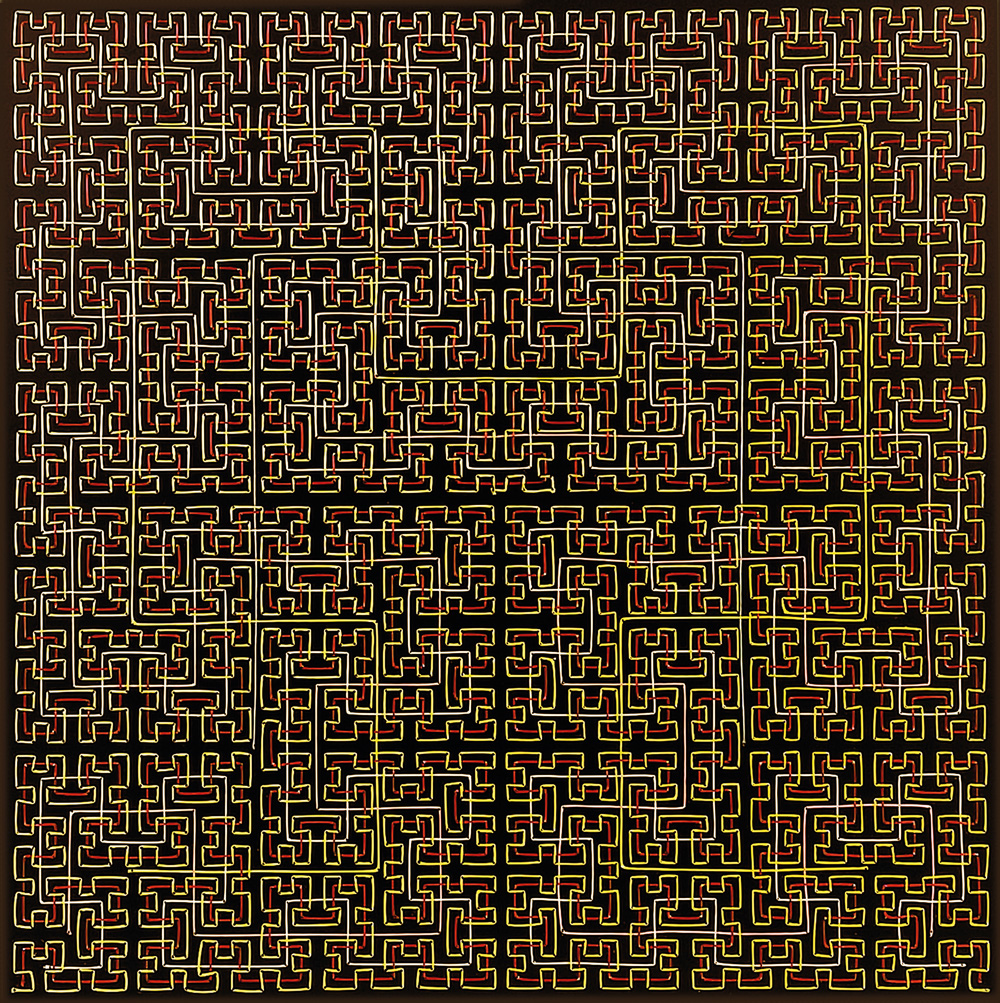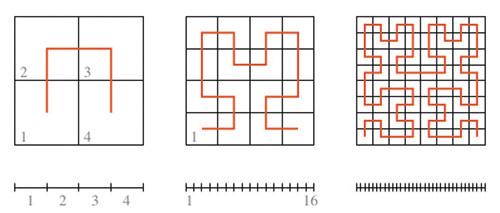| Stomachion | |||||
 |
Hilbert Curve The Hilbert curve is a so-called space-filling curve or FASS curve (space-filling, self-avoiding, simple, and self-similar). It was discovered in 1891 by the German mathematician David Hilbert (1862-1943). The first space-filling curve was discovered a year earlier by the Italian mathematician Giuseppe Peano (1858-1932). The discovery was likened by science journalist David Darling to an "earthquake in the traditional structure of mathematics," and the Russian mathematician Naum Wilenkin wrote: "Everything lay in ruins, all fundamental mathematical concepts had lost their meaning." What had happened? Why were these curves such a "deep shock to mathematicians" (Martin Gardner)? It concerned the understanding of the concept of dimension. We all agree that space is three-dimensional. A plane is two-dimensional, a line is one-dimensional, and a point is zero-dimensional. All mathematicians agreed that a curved line, no matter how curved, must be one-dimensional, and only a plane was two-dimensional. Until Peano and Hilbert discovered their "space-filling curves" which, if one follows a certain construction principle, traverse the entire plane and even the entire space in an uninterrupted line, without intersecting and reaching absolutely every possible point in the plane or space. The question is: are these curves one-dimensional or two- or three-dimensional? With our normal concept of dimension, this is no longer comprehensible. The French-American mathematician Benoît B. Mandelbrot (1924-2010) introduced the concept of "fractional" or "fractal" dimension to explain this, as found in certain natural or artificial formations or geometric patterns (fractals). Fractals exhibit a high degree of self-similarity, for example, when an object consists of several reduced copies of itself, such as a tree with its branches or a cauliflower with its florets. Space-filling curves are used in simulations using computer numerics, in the organization of efficient route systems in logistics, or even in the control of weapon systems.
|
Hilbert curve and its first six iteration steps (nails and satin thread on lightweight panel, 70 x 70 cm). 1st stage = light blue, 2nd stage = yellow, 3rd stage = pink, 4th stage = white, 5th stage = yellow, 6th stage = red. |
|
The fractal Hilbert curve is constructed through stepwise reduction and repetition: Starting with a square divided into 4 equal squares, whose midpoints are connected. Each of these sub-squares is then subdivided into 4 sub-squares, whose sub-elements are connected: the upper two side by side, the lower two mirrored and rotated. This composition principle is repeated in each subsequent iteration step, causing the one-dimensional curve to traverse every point in the two-dimensional plane in infinity. The curve also completely fills the three-dimensional space.
|
